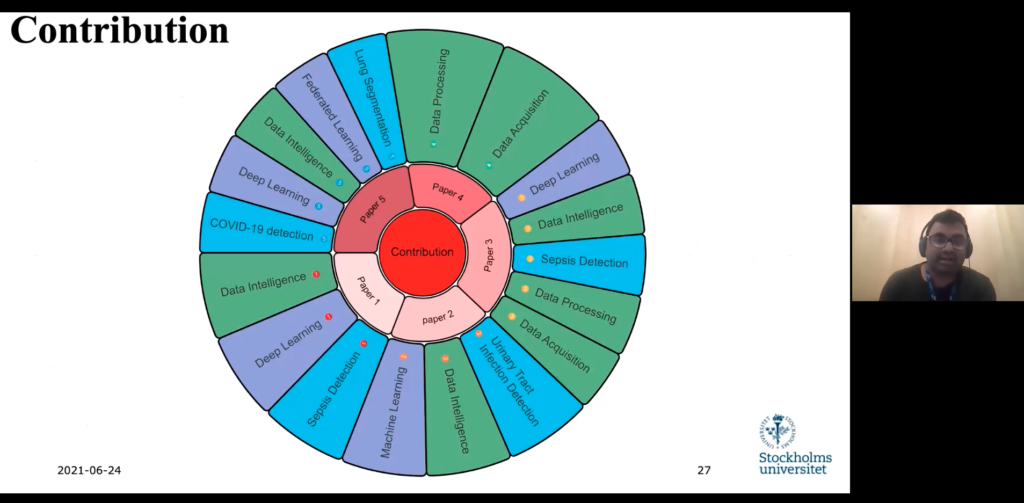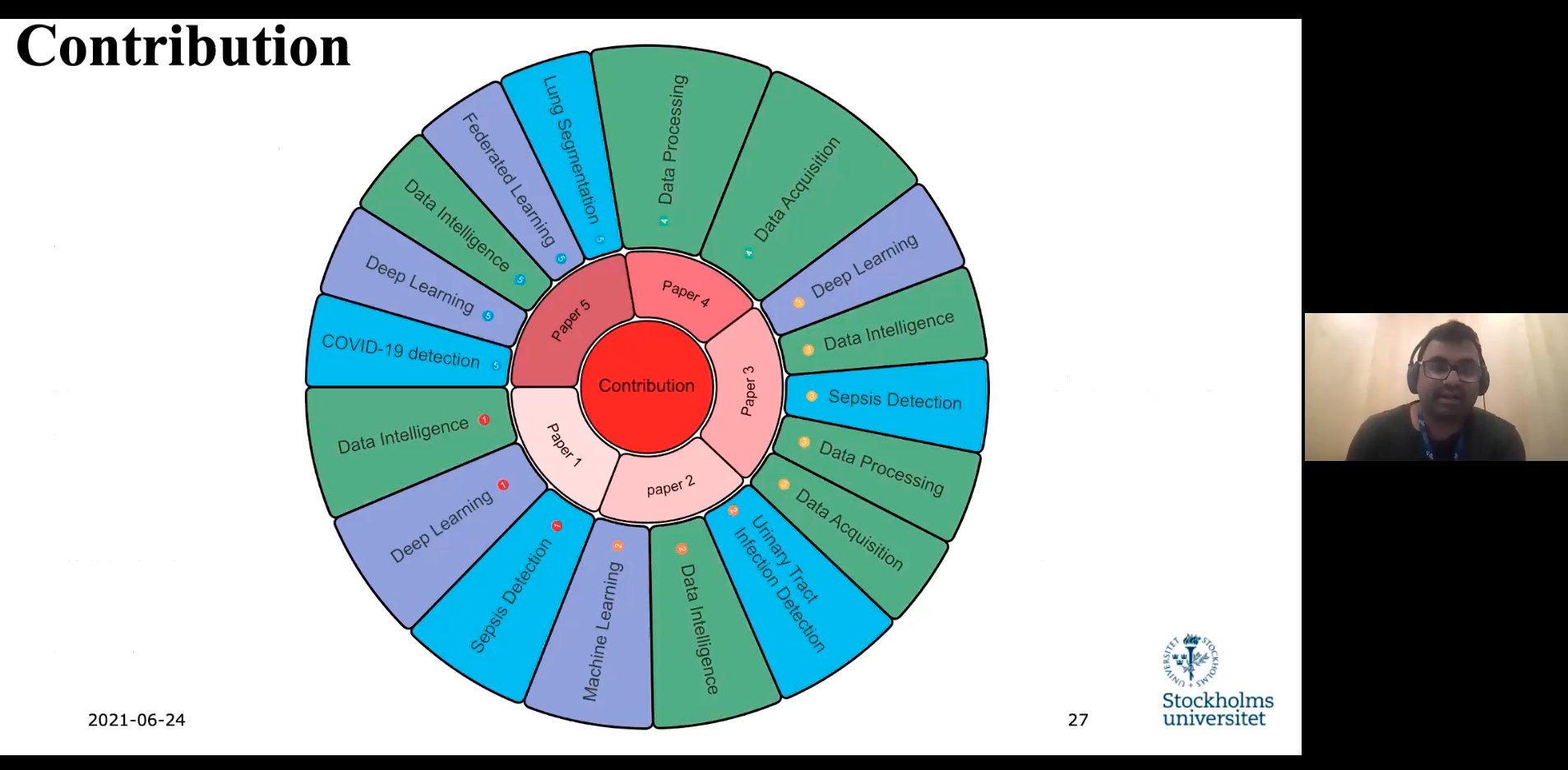On 24 June 2021 (10:00-12:00), I presented the mid-term seminar (Halvtidssemarium) with my current research summary entitled ‘Improvement of Internet of Medical Things based Applications with Distributed Machine Learning Approach‘. The respected expert reviewers (Expertgranskare) were Lektor Saguna Saguna, Luleå tekniska universitet; and Docent Aron Larsson, DSV, SU.
I learned a lot from the reviewers regarding the research goal, direction, and insights about my topic. I sincerely hope that based on these valuable suggestions I will be able to complete my work successfully in the near future.
Abstract of my seminar:
The internet of medical things (IoMT) can be described as an interconnected setup among different medical devices to provide certain improved healthcare services in the form of IoMT based applications. In order to ensure this improvement, effective utilization of the healthcare data is the crucial factor. This efficient utilization could be a challenge due to the extreme heterogeneity of medical data and different data source locations with security and privacy constraints. Efficient usage of distributed machine learning could be beneficial here for successfully integrating the IoMT framework, medical data, and applications such as diagnostic tools. In this paper, various aspects of these IoMT applications were summarized with the vision to improve the overall diagnostic tools. Data intelligence is considered vital as it has been shown that adequate knowledge representation from the raw text data provides better performance in urinary tract infection detection task. Advance machine learning techniques with the integration of IoMT framework are also investigated to get an improved automatic sepsis detection diagnostic tool. Effective aggregation of different types of medical data is also looked upon in a separate IoMT framework construction study. Cutting-edge machine learning techniques such as semi-supervised learning, transfer learning, multi-task learning, and federated learning-based machine learning framework are also employed to detect COVID-19 infection and lung area segmentation using chest radiography data on Raspberry Pi edge devices. Based on these observations with the different studies, we posit some critical factors to investigate further in the future. The multi-modality-based data representation should be investigated. The existing medical datasets should be combined with real-time healthcare monitoring data obtained through cutting-edge sensors. Superior edge-centric computational devices should be utilized for more optimized distributed machine learning based approaches. We hope that successfully integrating these critical aspects will help us create a more effective IoMT based application as diagnostic helping tools for healthcare professionals.

